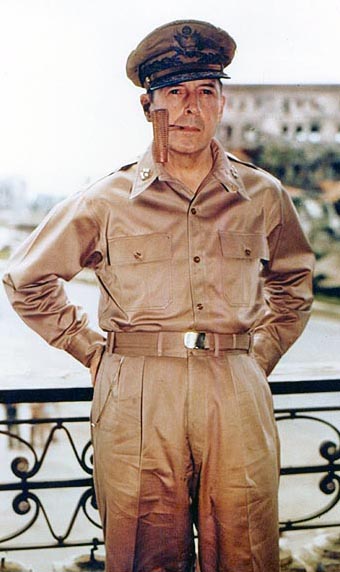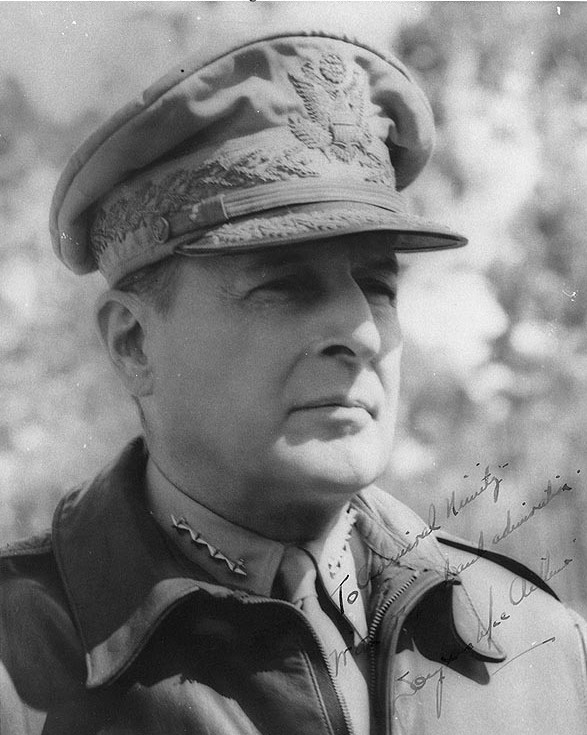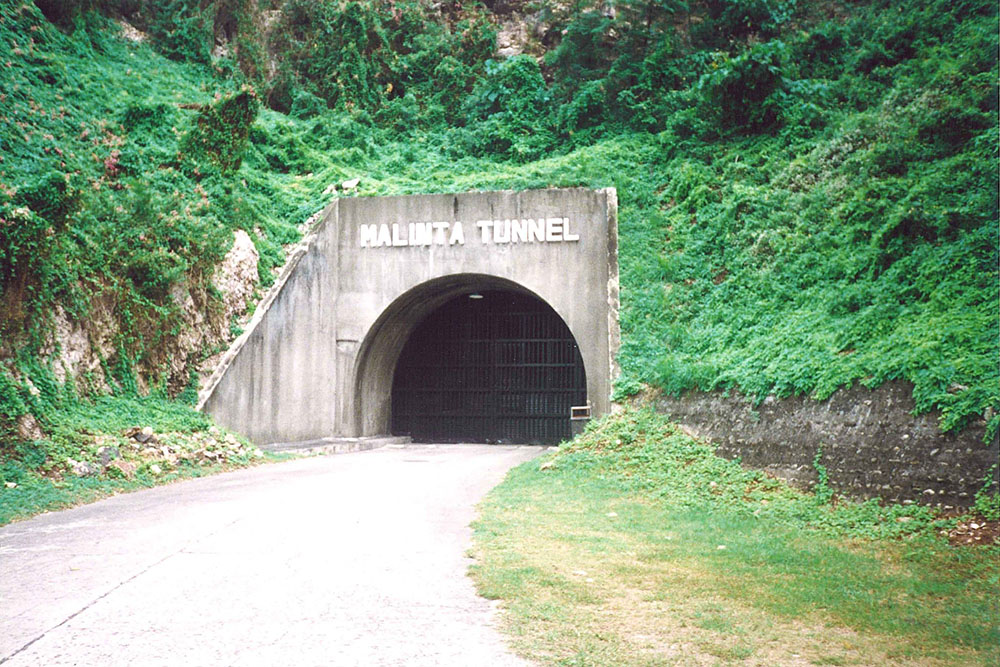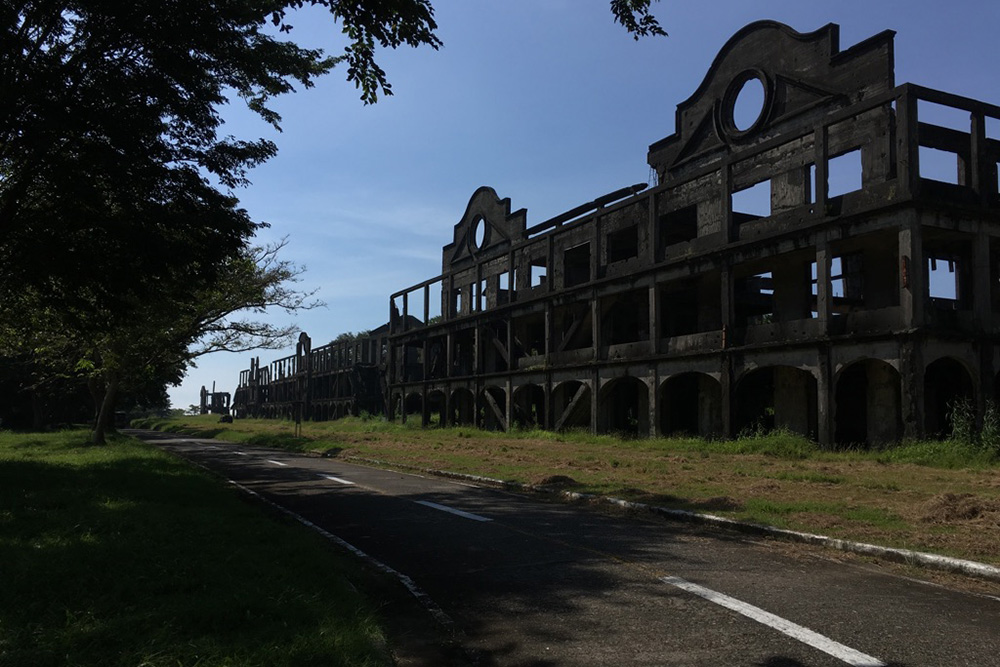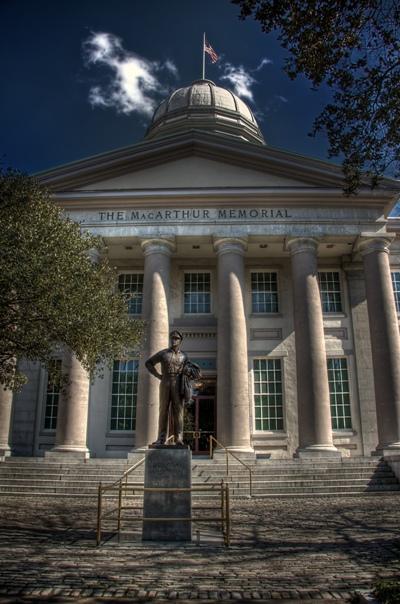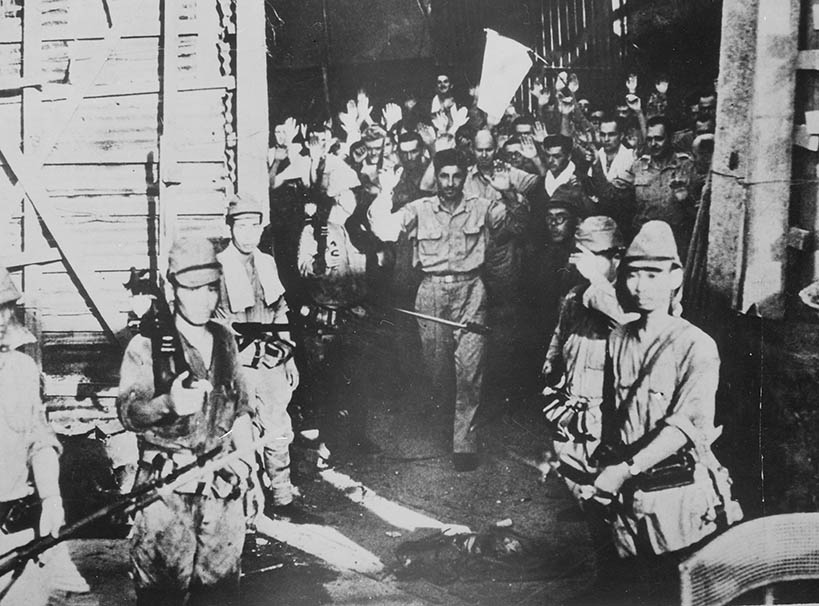MacArthur, Douglas "Gaijin Shogun"
- Date of birth:
- January 26th, 1880 (Little Rock/Arkansas, United States)
- Date of death:
- April 5th, 1964 (Washington, D.C., United States)
- Buried on:
- Tomb General Douglas MacArthur
- Service number:
- 0-57
- Nationality:
- American
Biography
Do you have more information about this person? Inform us!
- Period:
- First World War (1914-1918)
- Rank:
- Colonel
- Unit:
- Headquarters, 42nd Division, American Expeditionary Forces (AEF), U.S. Army
- Awarded on:
- March 29th, 1919
- Period:
- First World War (1914-1918)
- Rank:
- Colonel
- Unit:
- Headquarters, 42nd Division, American Expeditionary Forces (AEF), U.S. Army
- Awarded on:
- March 29th, 1919
Headquarters, 42nd Division, General Orders No. 22
- Period:
- Second World War (1939-1945)
- Rank:
- Colonel
- Awarded on:
- March 29th, 1919
Headquarters, 42nd Division, General Orders No. 22
- Period:
- First World War (1914-1918)
- Rank:
- Colonel
- Unit:
- Headquarters, 42nd Division, American Expeditionary Forces (AEF), U.S. Army
- Awarded on:
- March 29th, 1919
"Awarded a Third Bronze Oak Leaf Cluster in lieu of a Fourth Award of the Silver Star for conspicuous gallantry and intrepidity in action in France on 29 July 1918."
Headquarters, 42nd Division, General Orders No. 22
Headquarters, 42nd Division, General Orders No. 22
- Period:
- First World War (1914-1918)
- Rank:
- Colonel
- Unit:
- Headquarters, 42nd Division, American Expeditionary Forces (AEF), U.S. Army
- Awarded on:
- March 29th, 1919
"Awarded a Fourth Bronze Oak Leaf Cluster in lieu of a Fifth Award of the Silver Star for conspicuous gallantry and intrepidity in action in France on 12 September 1918."
Headquarters, 42nd Division, General Orders No. 22
Headquarters, 42nd Division, General Orders No. 22
- Period:
- First World War (1914-1918)
- Rank:
- Colonel
- Unit:
- Headquarters, 42nd Division, American Expeditionary Forces (AEF), U.S. Army
- Awarded on:
- March 29th, 1919
"Awarded a Silver Oak Leaf Cluster in lieu of a Sixth Award of the Silver Star for conspicuous gallantry and intrepidity in action in France on 25 September 1918.:
Headquarters, 42nd Division, General Orders No. 22
Headquarters, 42nd Division, General Orders No. 22
- Period:
- First World War (1914-1918)
- Rank:
- Brigadier General
- Unit:
- Headquarters, 42nd Division, American Expeditionary Forces (AEF), U.S. Army
- Awarded on:
- March 29th, 1919
"Awarded a Bronze Oak Leaf Cluster in addition to a Previously Awarded Silver Oak Leaf Cluster lieu of a Seventh Award of the Silver Star for conspicuous gallantry and intrepidity in action in France on 7 October 1918."
Headquarters, 42nd Division, General Orders No. 22
Headquarters, 42nd Division, General Orders No. 22
- Period:
- First World War (1914-1918)
- Rank:
- Brigadier General
- Unit:
- Headquarters, 42nd Division, American Expeditionary Forces (AEF), U.S. Army
- Awarded on:
- 1919
"For extraordinary heroism in action while serving as Chief of Staff, 42d Division, A.E.F., in the Salient-du-Feys, France, 9 March 1918. When Company D, 168th Infantry, was under severe attack in the salient du Feys, France, General MacArthur voluntarily joined it, upon finding that he could do so without interfering with his normal duties, and by his coolness and conspicuous courage aided materially in its success."
War Department, General Orders No. 27
War Department, General Orders No. 27
- Period:
- First World War (1914-1918)
- Rank:
- Brigadier General
- Unit:
- Headquarters, 42nd Division, American Expeditionary Forces (AEF), U.S. Army
- Awarded on:
- 1919
"For extraordinary heroism in action while serving as Chief of Staff, 42d Division, A.E.F., near Cote-de-Chatillon, France, October 14 - 16, 1918: As brigade commander General MacArthur personally led his men and by the skillful maneuvering of his brigade made possible the capture of Hills 288, 242, and the Cote-de-Chatillon, France, 14 - 16 October 1918. He displayed indomitable resolution and great courage in rallying broken lines and in reforming attacks, thereby making victory possible. On a field where courage was the rule, his courage was the dominant feature."
War Department, General Orders No. 27
--
Second DSC received as Bronze Oak Leaf Cluster
War Department, General Orders No. 27
--
Second DSC received as Bronze Oak Leaf Cluster
- Period:
- First World War (1914-1918)
- Rank:
- Brigadier General
- Unit:
- Headquarters, 42nd Division, American Expeditionary Forces (AEF), U.S. Army
- Awarded on:
- 1919
"For exceptionally meritorious and distinguished services to the Government of the United States, in a duty of great responsibility during World War I. General MacArthur served with credit as Chief of Staff of the 42d Division in the operations at Chalons and at the Chateau-Thierry salient. In command of the 84th Infantry Brigade, he showed himself to be a brilliant commander of skill and judgment. Later he served with distinction as Commanding General of the 42d Division."
- Rank:
- General
- Awarded on:
- 1935
War Department, General Orders No. 7
--
Second DSM received as Bronze Oak Leaf Cluster
- Period:
- Second World War (1939-1945)
- Rank:
- General
- Unit:
- Commander-in-Chief, Headquarters, U.S. Army Forces in the Far East (USAFFE), U.S. Army
- Awarded on:
- April 1st, 1942
Citation:
"For conspicuous leadership in preparing the Philippine Islands to resist conquest, for gallantry and intrepidity above and beyond the call of duty in action against invading Japanese forces, and for the heroic conduct of defensive and offensive operations on the Bataan Peninsula. He mobilized, trained, and led an army which has received world acclaim for its gallant defense against a tremendous superiority of enemy forces in men and arms. His utter disregard of personal danger under heavy fire and aerial bombardment, his calm judgment in each crisis, inspired his troops, galvanized the spirit of resistance of the Filipino people, and confirmed the faith of the American people in their Armed Forces."
General Orders No. 16, War Department
"For conspicuous leadership in preparing the Philippine Islands to resist conquest, for gallantry and intrepidity above and beyond the call of duty in action against invading Japanese forces, and for the heroic conduct of defensive and offensive operations on the Bataan Peninsula. He mobilized, trained, and led an army which has received world acclaim for its gallant defense against a tremendous superiority of enemy forces in men and arms. His utter disregard of personal danger under heavy fire and aerial bombardment, his calm judgment in each crisis, inspired his troops, galvanized the spirit of resistance of the Filipino people, and confirmed the faith of the American people in their Armed Forces."
General Orders No. 16, War Department
- Period:
- Second World War (1939-1945)
- Rank:
- General
- Unit:
- Commander-in-Chief, Headquarters, South West Pacific Area (SWPA), Allied Forces
- Awarded on:
- 1944
Citation:
"For exceptionally meritorious and distinguished services to the Government of the United States, in a duty of great responsibility as Supreme Commander of Allied Forces in the Southwest Pacific since March 1942. Under extremely difficult conditions of terrain, climate and limited forces and material he expelled the enemy from eastern New Guinea, secured lodgments on the Island of New Britain and gave strategic direction to coordinated operations resulting in the conquest of the New Georgia Group and the establishment of the United States Army and Navy forces on Bougainville Island. He has inflicted heavy losses on the enemy and established his forces in positions highly favorable for the construction of offensive operations."
General Orders No. 10, War Department (1944).
Douglas MacArthur had already received two DSM's for services during the First World War and Peacetime services. Thir third DSM was awarded in the form of a second bronze oak leaf cluster to be worn on the ribbon of the first DSM.
"For exceptionally meritorious and distinguished services to the Government of the United States, in a duty of great responsibility as Supreme Commander of Allied Forces in the Southwest Pacific since March 1942. Under extremely difficult conditions of terrain, climate and limited forces and material he expelled the enemy from eastern New Guinea, secured lodgments on the Island of New Britain and gave strategic direction to coordinated operations resulting in the conquest of the New Georgia Group and the establishment of the United States Army and Navy forces on Bougainville Island. He has inflicted heavy losses on the enemy and established his forces in positions highly favorable for the construction of offensive operations."
General Orders No. 10, War Department (1944).
Douglas MacArthur had already received two DSM's for services during the First World War and Peacetime services. Thir third DSM was awarded in the form of a second bronze oak leaf cluster to be worn on the ribbon of the first DSM.
- Period:
- Second World War (1939-1945)
- Rank:
- General
- Awarded on:
- 1945
"For exceptionally meritorious and distinguished service in a position of great responsibility to the Government of the United States in a position of great responsibility in the Southwest Pacific Area from February to October 1944."
- Period:
- Second World War (1939-1945)
- Rank:
- General of the Army (0)
- Awarded on:
- May 23rd, 1946
"For extraordinary heroism in connection with military operations against an armed enemy, in action against enemy forces on 26 January 1945, while visiting the 25th Division in combat at San Manuel, Luzon, Philippine Islands. On that date, General MacArthur advanced within 75 yards of the enemy lines to a point where two men had just been killed and several wounded by Japanese fire and which was still under heavy attack by enemy small arms, mortar, and cannon. Hidden enemy machine gunners and riflemen were opposing the advance with deliberately aimed cross-fire which intermittently covered the area. General MacArthur's example in the face of enemy fire, was a source of inspiration to the men of the 25th Division and was in keeping with the highest traditions of the military forces of the United States."
General Orders No. 46, War Department (May 23, 1946).
Douglas MacArthur had already received two DSC's during the First World War and received this third decoration as his second Oak Leaf Cluster to be worn on the ribbon of the first DSC.
- Period:
- Second World War (1939-1945)
- Rank:
- General of the Army (0)
- Unit:
- Commander-in-Chief, Headquarters, South West Pacific Area (SWPA), Allied Forces
- Awarded on:
- April 19th, 1948
Citation
"For exceptionally meritorious and distinguished services to the Government of the United States, in a duty of great responsibility, during the period 20 October 1944 to 4 July 1945. As Supreme Commander of Allied Air, Ground and Sea Forces in the Southwest Pacific, General of the Army Douglas MacArthur planned and personally directed the campaigns which resulted in the liberation of the Philippine Islands. Strongly entrenched and superior enemy forces were overwhelmed and completely destroyed in a series of decisive operations and exploiting U.S. Air and Sea superiority, coupled with the resolute and courageous fighting of the Ground Forces. The immediate result of the campaign was control of the China sea, the isolation of Japanese Forces in Burma, Malaysia and Indo-China and the termination of coastwise traffic supporting the Japanese Armies in Central and South China. The liberation of the Philippines began with the landings on Leyte on 20 October in which complete strategic surprise was achieved. After bitter fighting under most difficult conditions of weather and terrain, General MacArthur destroyed the Japanese forces which included the noted 1st Division of the Kvantung Army. Again surprising the enemy, General MacArthur moved his forces boldly up the Western Coast of the main Philippine Island and effected a landing on the shores of Lingayen Gulf on 9 January 1945. The flawless execution of this hazardous amphibious approach and landing so disorganized the enemy that in a series of deep thrusts Manila was liberated on 25 February. The fortress of Corregidor fell soon afterward in a brilliantly conceived and directed combined land, sea and air operation. By the end of June only isolated groups of enemy remained in Luzon. While the United States SIXTH Army was so engaged, EIGHTH Army units cleared the enemy from the Southern Islands in a series of amphibious operations. By 4 July organized resistance had terminated, completing the liberation of the Philippine Islands and the 17,000,000 inhabitants from Japanese domination. More than 300,000 dead and 7,000 prisoners were lost by the enemy, our casualties in killed, wounded and missing totaling 60, 628. Seventeen of our divisions had opposed and defeated twenty-three enemy divisions. The air, ground, and naval forces worked in complete unison to inflict this crushing disaster on the Japanese Army."
General Orders No. 27, Department of the Army (April 19, 1948).
Fourth DSM awarded in the form of a third bronze oak leaf cluster to be worn on the ribbon of the first DSM.
"For exceptionally meritorious and distinguished services to the Government of the United States, in a duty of great responsibility, during the period 20 October 1944 to 4 July 1945. As Supreme Commander of Allied Air, Ground and Sea Forces in the Southwest Pacific, General of the Army Douglas MacArthur planned and personally directed the campaigns which resulted in the liberation of the Philippine Islands. Strongly entrenched and superior enemy forces were overwhelmed and completely destroyed in a series of decisive operations and exploiting U.S. Air and Sea superiority, coupled with the resolute and courageous fighting of the Ground Forces. The immediate result of the campaign was control of the China sea, the isolation of Japanese Forces in Burma, Malaysia and Indo-China and the termination of coastwise traffic supporting the Japanese Armies in Central and South China. The liberation of the Philippines began with the landings on Leyte on 20 October in which complete strategic surprise was achieved. After bitter fighting under most difficult conditions of weather and terrain, General MacArthur destroyed the Japanese forces which included the noted 1st Division of the Kvantung Army. Again surprising the enemy, General MacArthur moved his forces boldly up the Western Coast of the main Philippine Island and effected a landing on the shores of Lingayen Gulf on 9 January 1945. The flawless execution of this hazardous amphibious approach and landing so disorganized the enemy that in a series of deep thrusts Manila was liberated on 25 February. The fortress of Corregidor fell soon afterward in a brilliantly conceived and directed combined land, sea and air operation. By the end of June only isolated groups of enemy remained in Luzon. While the United States SIXTH Army was so engaged, EIGHTH Army units cleared the enemy from the Southern Islands in a series of amphibious operations. By 4 July organized resistance had terminated, completing the liberation of the Philippine Islands and the 17,000,000 inhabitants from Japanese domination. More than 300,000 dead and 7,000 prisoners were lost by the enemy, our casualties in killed, wounded and missing totaling 60, 628. Seventeen of our divisions had opposed and defeated twenty-three enemy divisions. The air, ground, and naval forces worked in complete unison to inflict this crushing disaster on the Japanese Army."
General Orders No. 27, Department of the Army (April 19, 1948).
Fourth DSM awarded in the form of a third bronze oak leaf cluster to be worn on the ribbon of the first DSM.
- Period:
- Korean War (1950-1953)
- Rank:
- General of the Army (0)
- Awarded on:
- October 20th, 1950
Headquarters, Far East Air Forces, General Orders No. 93
- Period:
- Korean War (1950-1953)
- Rank:
- General of the Army (0)
- Awarded on:
- 1950
Department of the Army, General Orders No. 39
- Period:
- Second World War (1939-1945)
- Period:
- Second World War (1939-1945)
Douglas MacArthur received was the first recipient of this decoration.
- Period:
- First World War (1914-1918)
Purple heart No. 1
- Period:
- First World War (1914-1918)









